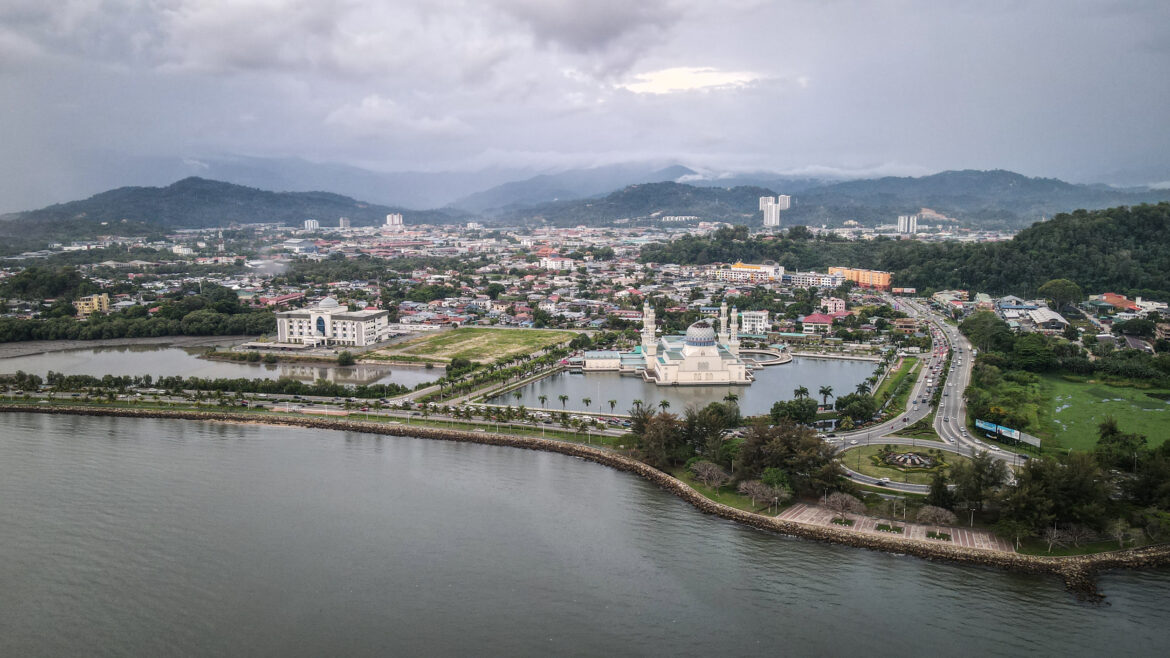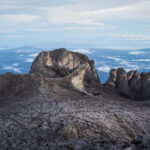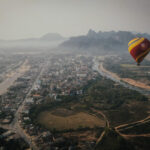Kota Kinabalu, often referred to as KK, is the capital of the state of Sabah in Malaysia. The town is surrounded by lush rainforests and is close to Mount Kinabalu, the highest peak in Malaysia.
Kota Kinabalu was known as Jesselton during the British colonial period. It was heavily bombed during World War II, leading to extensive rebuilding post-war. Today the city is a melting pot of cultures, including indigenous groups such as the Kadazan-Dusun, Bajau, and Murut, as well as Chinese, Malay, and other ethnicities. The city is also a gateway for oil and gas exploration in the region.
How to get to Kota Kinabalu?
By Air:
Some airlines operate international flights directly to Kota Kinabalu International Airport (BKI). If you are already in Malaysia, you can take a domestic flight from major cities such as Kuala Lumpur, Penang, or Johor Bahru.
By Land:
If you are travelling within Sabah, there are long-distance bus services that connect Kota Kinabalu with other towns and cities in Sabah. Major bus companies operate routes from Sandakan, Tawau, and other locations. Alternatively, you can drive to Kota Kinabalu from other parts of Sabah or Brunei and Sarawak in East Malaysia. Roads are generally in good condition, but it’s best to check current travel conditions.

When to go?
Kota Kinabalu and offshore islands can be visited the whole year, but the best time is between February and April, during the dry season. The weather during these months is generally more favourable with less rainfall, making it easier to enjoy outdoor activities.
How long should you stay?
2-3 days are enough to visit sights around the town and relax on the nearby islands or do some snorkelling.
Where to stay?
I spent several days in Kota Kinabalu and can recommend three places to stay: ATAP Hotel, Hotel Tourist by HotSpot Essential and Akinabalu Youth Hostel. All of them were affordable and offered a nice and clean private room.
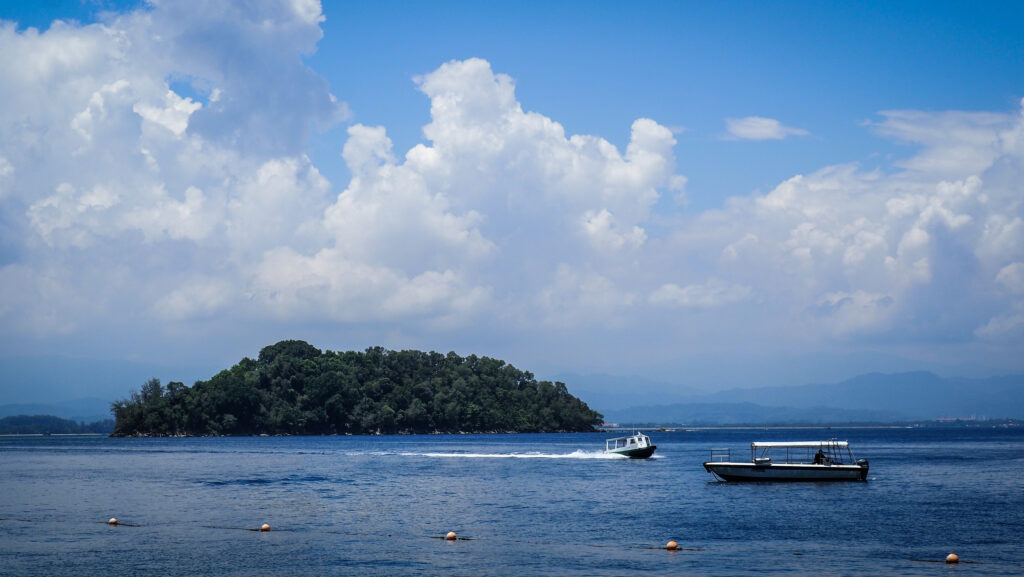
How to get around?
Even though Kota Kinabalu is the biggest town in Sabah state, it’s still quite compact and easy to get around. The city centre can be explored on foot, while more distant places can be easily reached by taxi. Order one by using a popular mobile app – Grab.
What to see in Kota Kinabalu?
Atkinson Clock Tower
It’s the oldest wooden building still standing in Kota Kinabalu that survived the destruction of Jesselton during World War II.
Gaya Street Sunday Market
Gaya Street turns into a night market on Friday and Saturday from 5 PM to midnight and it’s an excellent place to try various local snacks and drinks. On Sunday morning, from 6 AM to 1 PM, it changes into a regular market selling plants, fruits, vegetables, clothing, antiques, etc.
Central Market
Tropical fruits, fresh vegetables, fish as well as seafood can be found here.
Night Food Market
From fresh seafood to traditional Malaysian dishes such as satay or laksa, every stall offers a unique taste experience. The market is usually very crowded and extremely hot, so get yourself ready. Don’t be shy to haggle on the price of seafood, it’s perfectly OK to do so.
Bandaraya Mosque
You have to cover up to enter and it’s possible to get clothes at the reception centre. The best is to avoid prayer time as you won’t be allowed inside. There is nothing special to see when it comes to the interior and they charge an entrance fee, which is ridiculous. You can easily take pictures of the mosque from the street outside, catching a nice reflection in the pond. That’s the best thing you can do here!
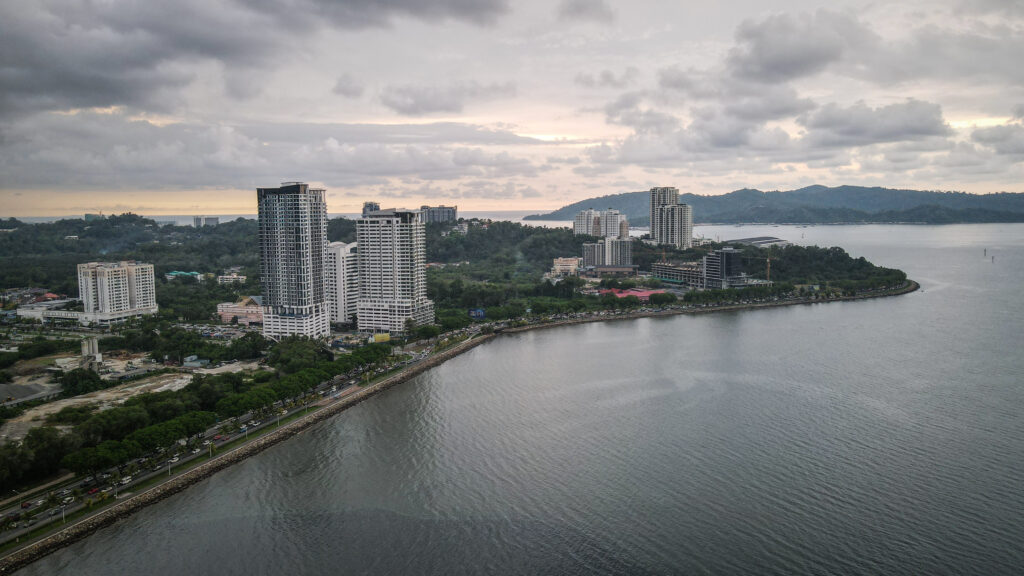
Taman Awam Teluk Likas
A long stretch of green park and beach along the coastline. Nice place to exercise and relax under the shade enjoying some sea breeze. I wouldn’t swim here though, as the water didn’t look clean.
Sabah State Mosque
The building’s gold accents shine bright and there is some nice greenery around. I wasn’t able to enter the building as it was prayer time.
Sabah State Museum
This museum offers a great introduction to Sabah’s indigenous cultures. Its exhibits include the traditional dress, embroidery, celebrations, rituals, crafts and musical instruments of the Dusun, Murut, Rungus, Bajau and other peoples of Sabah.
The ancient Chinese ceramics discovered in 2013 from the Jade Dragon wreck, which dates back to around AD 1300, are located upstairs. Additionally, the Heritage Village adjacent to the museum features traditional tribal dwellings such as Kadazan bamboo cottages and a Chinese farmhouse.
Sabah Islamic Civilization Museum
The museum presents the history of the spread of Islam in Southeast Asia including the roots of its arrival into Sabah and Malaysia as a whole. It features Islamic artefacts brought from the Middle East countries such as Turkey, Egypt, Iran, Morocco and India as well as local art from Sabah and neighbouring Sarawak and Brunei.
Tanjung Aru Beach
Nice spot to watch sunset with many food stalls nearby. Unfortunately, there is trash all around the place which is hard to ignore. The beach is about 10 – 15 minutes drive from the city centre.
Mari Mari Cultural Village
Mari Mari offers tours that highlight the many traditional residences of the numerous ethnic communities of the Sabahan, including the Bajau, Lundayeh, Murut, Rungus, and Dusun. You will have the opportunity to witness blowpipe construction, tattooing, fire starting, and an understanding of the mystical beliefs of each of these tribes in addition to sampling delicacies from each. Unfortunately, the samples are really microscopic! The visit also includes a buffet meal and a brief dancing performance. Overall, nice but very touristy experience and the guide was sometimes rushing with her explanations.
The morning session starts at 11 AM and the afternoon one at 2 PM. The ticket costs 130 RM for international tourists and 110 RM for Malaysians. You can order a taxi via Grab to get there.
Ulu Kionsom Waterfall
A popular spot for swimming and picnicking among locals, located within walking distance from Mari Mari Cultural Village. After buying a ticket, follow the cemented path with the sound of the rushing water increasing with every step.
To go to the last tier of the waterfall, you have to scramble up the forested slope. The rocks and roots can be very slippery so watch your steps and take a bottle of water.
The ticket costs 10 RM for foreigners and 3 RM for Malaysians.
Monsopiad Heritage Village
A good and less popular alternative to Mari Mari Cultural Village. This traditional village commemorates the life and time of the legendary Kadazan and head-hunter warrior Monsopiad. The schedule is quite typical: presentation of traditional food, medicine, firemaking and hunting techniques followed by music and dance performance. The morning session starts at 11 AM and the afternoon one at 2 PM.
Sabah Art Gallery
The most interesting part is the uniquely shaped building of the gallery. It costs 15 RM to enter for foreigners (compared to 5 RM for locals). The museum itself is extremely small and I was done in 15 minutes. There are some free exhibits outside, so stick to those and save yourself some money for a nice dinner.
Wetland Ramsar Site
A place with lots of potential where among mangroves you can see crabs, monitor lizards and various birds. Unfortunately, the amount of rubbish is overwhelming. The boardwalks are also in dire need of repair so mind your steps.
Puh Toh Si Chinese Temple
A serene and well-kept Chinese temple with a reclining Buddha resting inside. The temple is on a small hill near the highway.
Tunku Abdul Rahman Marine Park
Tunku Abdul Rahman Marine Park is a group of islands and their surrounding waters located off the coast of Kota Kinabalu. The marine park was established in 1974 and is named after Malaysia’s first Prime Minister. The park comprises five main islands: Gaya, Manukan, Mamutik, Sapi and Sulug.
How to get there?
Take a short boat ride from Jesselton Point Ferry Terminal, with services running regularly to the islands. The islands have various facilities, including accommodation options ranging from budget chalets to luxury resorts, as well as restaurants, restrooms, and picnic areas.
As of May 2024, you can visit Mamutik, Manukan and Sapi Islands. Gaya Island is off-limits for day-trippers. You can only go there if you are staying in one of the resorts on the island. There is a large community of illegal migrants from the Philippines which probably has something to do with that.
Boats depart from 8:30 AM and run every 30 minutes. Return time is between 12 PM – 4 PM. Once you reach the island, the tour operator will ask you at what time you would like to be picked up.

Prices
The price depends on the number of islands that you want to visit.
1 island: 35 RM per person
2 islands: 45 RM per person
3 islands: 55 RM per person
The national park entrance fee (25 RM) and terminal fee (9.20 RM) are added to the price.
Gear rental: fins, life jacket for snorkelling, snorkelling mask or beach mat can be rented for 10 RM each.
A day trip to 3 islands
First, we stopped at Manukan, where I had a walk to the other side of the island to the area called Sunset Point. I was trying to find a hiking trail through the jungle to get there and I did find it, but wearing sandals didn’t prove to be a good idea. Instead, I turned back and followed a concrete path. There were so many mosquitos that it was impossible to stop even for a second!
The sunset point wasn’t anything special and there was a lot of rubbish everywhere On the positive side, it was relatively quiet so I managed to fly a drone and take some aerial photos. Then I walked back to the beach and hung around there waiting for the boat to Mamutik Island.
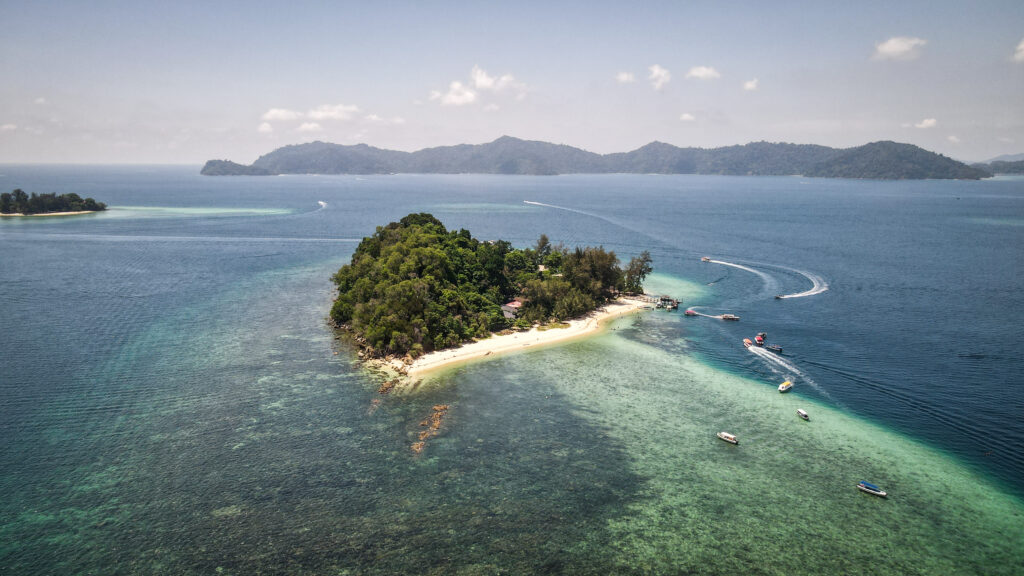
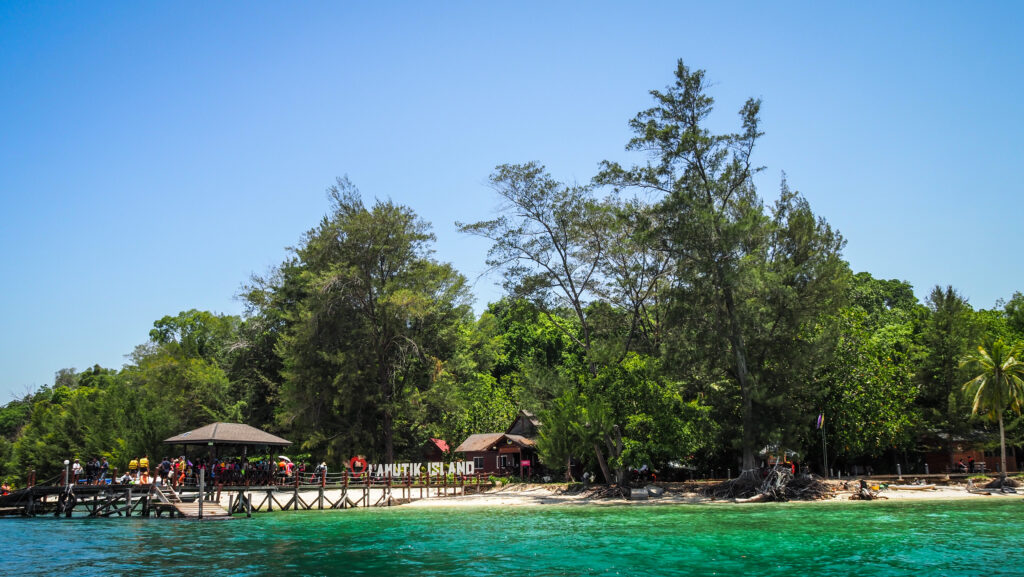
Mamutik is the smallest island in the park, with only one resort. I followed a short loop trail and then spent the rest of the time in the shadow of the trees or the warm waters of the South China Sea.
Then it was time for the last stop – Sapi Island, located just next to much bigger Gaya. Tiny place, where I spent most of the time just chilling in the water. Unfortunately, on the next day, I noticed that my legs were full of sandfly bites, so don’t forget the repellent!

